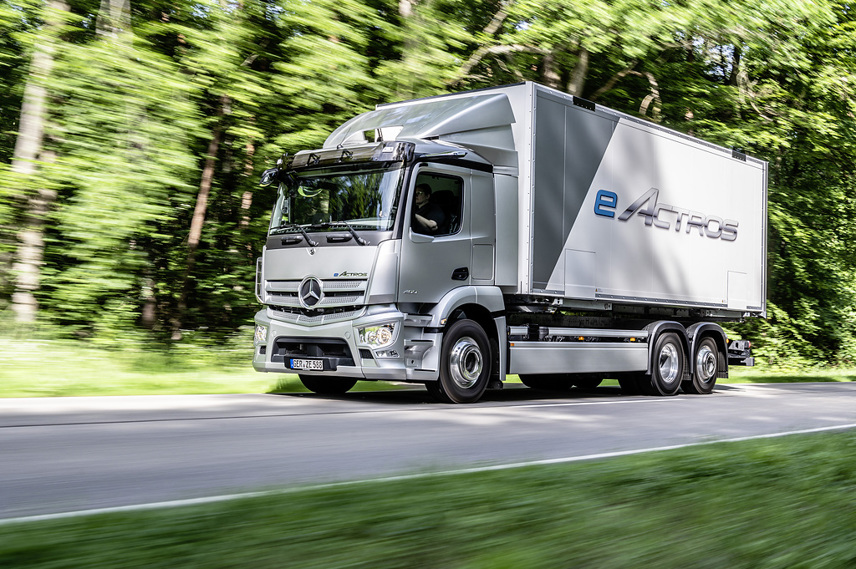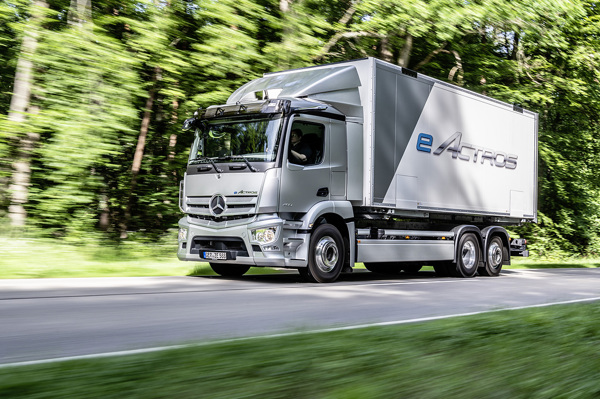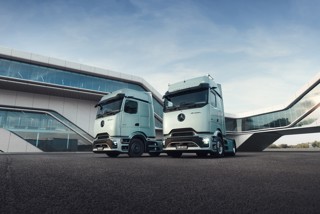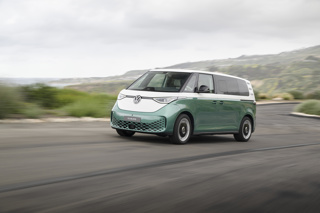Review
It appears pretty obvious the passenger car and even the light commercial vehicle market are going headlong into battery electric vehicles as their solution to drive zero tailpipe emission vehicles. Of course, that’s no surprise as the sale of new diesel and petrol vehicles will be banned from 2030 but what happens as we go up the weight range and the decision to ban sale of diesels has yet to be confirmed here in the UK?
That’s the conundrum facing all the light and heavy truck manufacturers and then if we factor in the fact that virtually every European country could choose a different timescale to introduce the ban although keeping in mind the EU has determined 2040 should be the end date for new diesel truck sales.
As a consequence every truck manufacturer is in the unenviable task of deciding which technology to invest in and, perhaps the most important question, which will win out in the long run at key weight ranges.
This was the basis of a recent visit to Daimlers research and development centre in Germany, in which there was the opportunity to drive their latest generation eActros and also take a ride in the Gen2 Hydrogen Fuel Cell tractor unit.
As with many major European truck manufacturers, Mercedes-Benz Trucks are committed to the target of achieving locally CO2-neutral road freight transportation using a mixture of both battery and hydrogen-based fuel cell technology. Indeed they have already committed to completely decarbonise their European product portfolio by going over to electrically powered trucks by 2039.
The first time Mercedes-Benz Trucks hinted they were working on an electric truck was at the 2016 Commercial Vehicles IAA in Hanover when a ‘concept’ urban truck was presented. As a consequence of this, ten prototypes of the eActros ( dubbed the eActros innovation fleet) went into customers trials in Germany and other European countries from 2018 onwards. These were very definitely belonging to the research and development team and helped the team start to understand the operating intricacies of an urban heavy duty electric truck.
After three years of testing in a real world environment, the second generation eActros had its world première at the end of June 2021 and will form the basis of their electric heavy duty electric truck offering along with the eEconic and a long haul version for the next few years.
At a recent press event there was an opportunity to take a couple of three axle rigids out on the road and more interestingly with two power settings. These are based around a modular battery system following the basic philosophy of the whole Daimler Group used in passenger cars, vans, buses and, of course, trucks. In the case of the eActros each NMC battery pack is rated at 105kWh and depending on the version, they use three or four battery packs offering 315kWh or 420kWh.
eActros 300 6x2
Designated as the eActros 300 6x2 this uses the three battery pack system and has two maximum vehicle lengths of 8700mm and 9300mm based around wheelbases of 4000mm and 4600mm respectively. It is rated at 27 tonne gross vehicle weight and has a payload of 17.7 tonne payload on the shorter wheelbase and this is reduced by 100kgs on the longer version based on the M ClassicSpace cab with funnily enough an ‘engine’ tunnel of 170mm.
The plated axle weights are 8 tonne on the front, 11.5 tonne on the middle and 7.5 tonne on the rear but this can be upgraded to 8 tonne.
The 315kWh battery pack is connected to not just one motor but two, and these are rated at a maximum of 400kW with a continuous power setting of 330kW. There’s also a two speed transmission helping to maximise the range of power settings and speeds necessary to deliver a smooth and practical driving experience.
Of course, electric vehicles are as much about the range and charging capabilities as they are about the driveline specification and the eActros is no exception. The motor/battery combination results in a range of approximately 185 miles (300kms) with a maximum speed of 89kph just under the legal 90kph. As far as charging can be concerned, the eActros can be charged with up to 160 kW and the three battery packs need around 75 minutes to charge from 20 to 80 per cent at a normal DC rapid charging point with a charging current of 400 A
One of the many urban myths surrounding electric vehicles, is that they cannot power auxiliary equipment, but this isn’t the case with the new eActros and many modern electric vans and trucks in general. The eActros has an ‘engine’ PTO rated at a low powered peak of 32kW and 20kW continuous, and a high powered peak of 52kW with a continuous power of 30kW.
eActros 400 6x2 extended range
The extended range eActros is based around the 300 model but is slightly longer at 9600mm overall due to the loner 4900mm wheelbase and whilst the gross vehicle weight remains at 27 tonnes its payload is 16.6 tonne.
The rest of the ‘mechanical’ specification remains the same but as the ‘400’ nomenclature alludes to, the battery capacity has been upgraded by adding a further 105kWh module taking the power to 420kWh increasing the range to around 250 miles (400kms) and extending the charging by an extra 25 minutes.
Driving
Stepping inside, any Actros driver would recognise the cab interior but perhaps the biggest change is the display in the standard interactive multimedia cockpit of the eActros which keeps the driver up-to-date on the charge level of the batteries and the remaining range, as well as the current and average energy consumption in kWh per 100 kilometres. The standard safety equipment includes the external Acoustic Vehicle Alerting System for improved acoustic detection for example by pedestrians and cyclists, not to mention the Sideguard Assist S1R system for enhanced safety when turning off to the nearside, and the fifth-generation Active Brake Assist with pedestrian detection.
A hardly audible hum signals the eActros is ready for work and a quick blip of the throttle sees the truck accelerate almost silently, as the vehicles also had mirrorcam there wasn’t even the standard door mirror noise, a very different experience indeed.
The turn of speed linked to unrivalled responsiveness coupled with an almost silent operation made for a very pleasant drive and will indeed herald in a new age of electric trucks operating within an urban environment.




















Login to comment
Comments
No comments have been made yet.